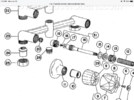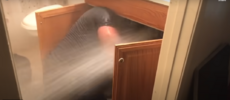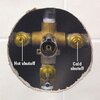CarolinaColtCollector
It’s never a “War Crime” the first time.
2A Bourbon Hound OG
Life Member
Multi-Factor Enabled
I have an old shower insert and (assuming) delta handles that control each side separately.
I have noticed when turning the water on (even hot), I’ll get a drip of water coming out from behind the cold handle, and when you turn the cold water on, I have graduated to a stream of water sometimes coming out.
Is it safe-ish to assume the leak is just at the handle and it’s designed that if it does leak, it’s there? Or am I going to be ripping an insert and wall out soon?
Im adding the caveat that it’s done this on and off for a year or so, and I have not noticed any moisture issues while replacing the floor, mold on the backer wall, etc.
I cannot remove the handle currently to look behind it, and don’t want to cause an issue if there isn’t currently one.
Leak is coming from where the handles flare out, not from the wall for reference.
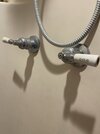
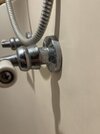
I have noticed when turning the water on (even hot), I’ll get a drip of water coming out from behind the cold handle, and when you turn the cold water on, I have graduated to a stream of water sometimes coming out.
Is it safe-ish to assume the leak is just at the handle and it’s designed that if it does leak, it’s there? Or am I going to be ripping an insert and wall out soon?
Im adding the caveat that it’s done this on and off for a year or so, and I have not noticed any moisture issues while replacing the floor, mold on the backer wall, etc.
I cannot remove the handle currently to look behind it, and don’t want to cause an issue if there isn’t currently one.
Leak is coming from where the handles flare out, not from the wall for reference.


Last edited:



